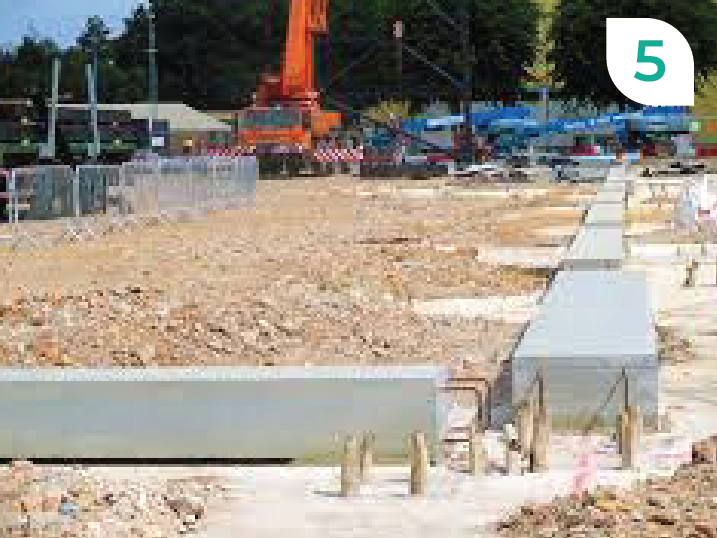Pad Footing Malaysia
Home > Pad Footing Malaysia
What is the difference between footing and foundation?
A foundation is a structure on which a building sits and transfers loads from its walls to its footings for support. The footing is therefore the structure on the soil while the soil beneath it is the foundation.
An appropriate footing takes into account the strength of the soil and is sized accordingly to spread the building load over it.
Deep footing is when the depth is equal or greater than the width, whereas shallow footing is when the depth is less than the width.
The five main types of footings are:
- Concrete pad footings – reinforced and isolated; the most cost-effective and simple way to support vertical loads and transfer them to the ground.
- Strip footing – a relatively small strip of reinforced concrete steel placed in a trench. Used for concrete or traditional timber floors.
- Pole construction (post and concrete): least costly; after digging a hole, a pole is inserted and it is covered with ready-mixed concrete.
- Timber piles – for structural piles construction; using a pile driving rig (big hammer), long timber poles are driven deep into the ground until they hit bedrock or fully submerged.
- Grout injected piles – Piles consist of footing and piers are used in situations where footing is impossible to be constructed. This is applicable to potentially unstable or unstable soils like beachfront or mudflat estuary areas. These piles are considered isolated footings and/or piers that are steel reinforced and cement grouted instead of concrete.

What is a pad footing?
As the name implies, pad footing is a form of shallow footing used to distribute a concentrated load across columns into the soil mass. Known also as an isolated pad footing, it could be non-reinforced or reinforced.
Pad footings are typically used to support beams. This type of footing can only be used when you are certain that there is no possibility of varying settlement below the whole building. It cannot support widespread loads.
Construction involves drilling holes into the ground, fitting them with reinforcement, and finally pouring concrete into the holes up to ground level. Depending on the ground conditions, a pad footing can also be deep.
Residential constructions with basements and many commercial structures use pad foundation.
Types of pad footing foundation
It is called a pad foundation when it is used to transfer and spread concentrated loads from superstructure to soil.
Pad footing foundations come in various types based on its design and other factors, which are:

Reinforced Concrete Foundation

Plain Concrete Foundation

Combined Pad Foundation

Continuous Pad Foundation

Pad and Ground Beam Foundation
What is the difference between footing and foundation?
A foundation is a structure on which a building sits and transfers loads from its walls to its footings for support. The footing is therefore the structure on the soil while the soil beneath it is the foundation.
An appropriate footing takes into account the strength of the soil and is sized accordingly to spread the building load over it.
Deep footing is when the depth is equal or greater than the width, whereas shallow footing is when the depth is less than the width.
The five main types of footings are:
- Concrete pad footings – reinforced and isolated; the most cost-effective and simple way to support vertical loads and transfer them to the ground.
- Strip footing – a relatively small strip of reinforced concrete steel placed in a trench. Used for concrete or traditional timber floors.
- Pole construction (post and concrete): least costly; after digging a hole, a pole is inserted and it is covered with ready-mixed concrete.
- Timber piles – for structural piles construction; using a pile driving rig (big hammer), long timber poles are driven deep into the ground until they hit bedrock or fully submerged.
- Grout injected piles – Piles consist of footing and piers are used in situations where footing is impossible to be constructed. This is applicable to potentially unstable or unstable soils like beachfront or mudflat estuary areas. These piles are considered isolated footings and/or piers that are steel reinforced and cement grouted instead of concrete.
Address
No 35, Tingkat satu, Taman Sri Kluang 86000 Kluang, Johor, Malaysia
